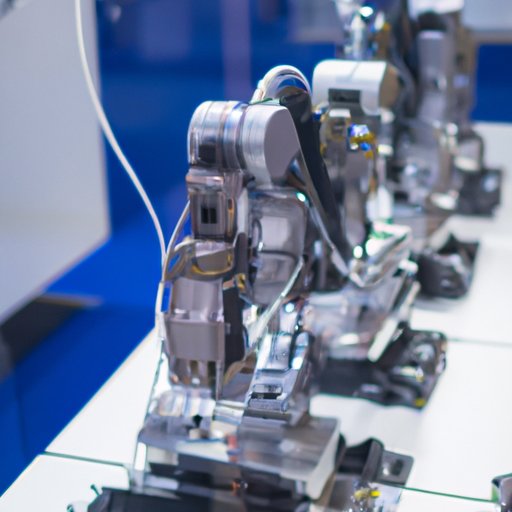Introduction
Automated machines are systems that use a combination of hardware, software, sensors, and actuators to perform tasks with minimal or no human intervention. Automation has become increasingly popular in recent years due to its numerous advantages, including improved efficiency, cost savings, and increased quality. In this article, we will explore how automated machines are made, the benefits they offer, and the role of artificial intelligence in the automation process. We will also look at the different types of automated machines and discuss the future of automation.

Exploring the Components of Automated Machines
The first step in creating an automated machine is to assemble the necessary components. Hardware refers to the physical parts of the system, such as motors, gears, and other mechanical components. Software is the programming code that controls the machine’s behavior. Sensors detect changes in the environment and send signals to the software, while actuators receive instructions from the software and move the machine according to those instructions.
Analyzing the Benefits of Automation
Automation offers a number of advantages over manual labor. For one, it is more efficient than manual labor, since machines can work faster and more accurately than humans. This can lead to significant cost savings, as automated machines require fewer resources and personnel. Additionally, automated machines can produce higher-quality products, since they do not suffer from fatigue or make mistakes due to lack of concentration.
Examining the Process of Building an Automated Machine
Once the necessary components have been assembled, the next step is to design the system. This involves mapping out the various components and their connections, as well as determining how the machine will interact with its environment. The components must then be integrated into the system and tested to ensure that they are working correctly. Finally, the system must be troubleshot to identify and address any issues.

Investigating the Human Element in the Automation Process
Though automated machines are designed to operate without human supervision, there is still a need for skilled professionals to build and maintain them. Programmers write the software code that controls the machine’s behavior, while engineers design the hardware and integrate the components. Both roles require technical knowledge and experience.

Comparing Different Types of Automated Machines
There are many different types of automated machines, each with its own unique purpose. Industrial robots are used in manufacturing processes to automate repetitive tasks. Autonomous vehicles, such as self-driving cars, use sensors and software to navigate on their own. Domestic robots, such as vacuum cleaners and lawn mowers, are designed to assist with household chores.

Looking at the Role of Artificial Intelligence in Automation
Artificial intelligence (AI) is playing an increasingly important role in the automation process. AI-driven automation uses algorithms to automate complex tasks, such as recognizing patterns or making decisions. Machine learning algorithms allow machines to learn from their environment and improve their performance over time.
Discussing the Future of Automated Machines
As technology advances, the popularity of automated machines is expected to continue to grow. Advances in AI, robotics, and other technologies will enable machines to take on more complex tasks and operate autonomously with greater accuracy and precision. This could revolutionize the way we work, allowing us to focus on more creative endeavors.
Conclusion
In conclusion, automated machines offer numerous benefits, from improved efficiency and cost savings to increased quality. The process of building an automated machine involves designing the system, integrating the components, and testing and troubleshooting. Human professionals, such as programmers and engineers, play an important role in the automation process. Finally, advances in artificial intelligence and other technologies will continue to shape the future of automation.
(Note: Is this article not meeting your expectations? Do you have knowledge or insights to share? Unlock new opportunities and expand your reach by joining our authors team. Click Registration to join us and share your expertise with our readers.)
